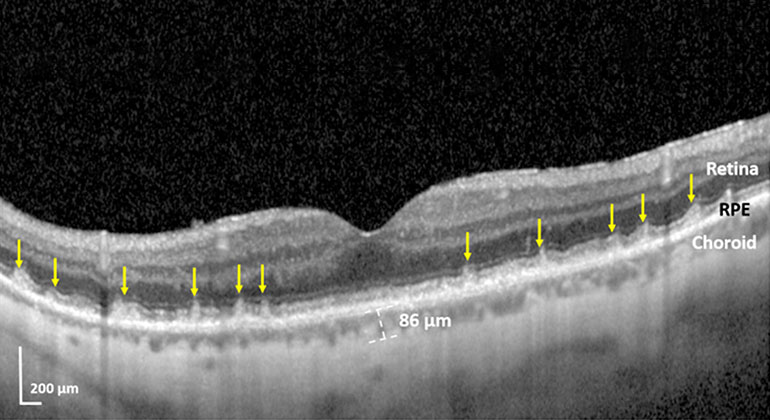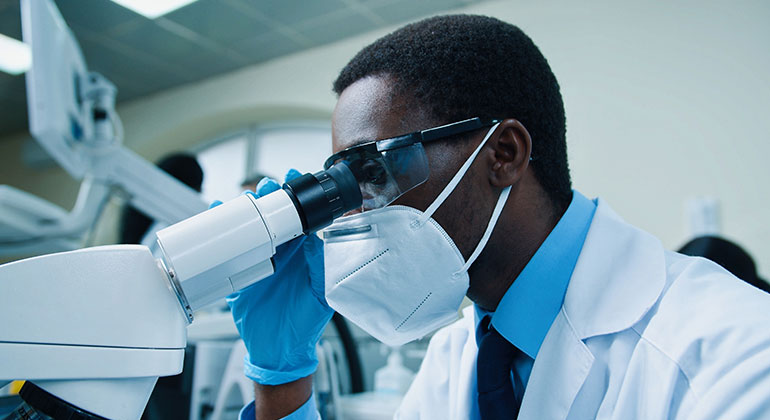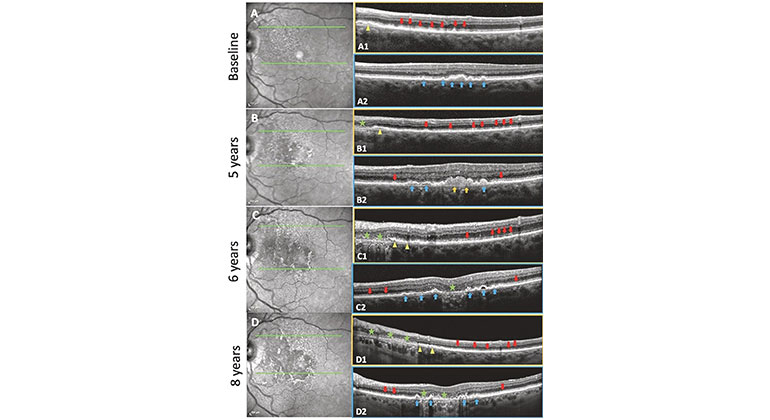Artificial Intelligence Algorithm Can Rapidly Detect Severity of Common Blinding Eye Disease
First-of-its-kind technology predicts risk of progression of age-related macular degeneration and helps preserve vision
A new artificial intelligence (AI) algorithm developed by researchers at New York Eye and Ear Infirmary of Mount Sinai (NYEE) can rapidly and accurately detect age-related macular degeneration (AMD), a leading cause of vision loss in the United States.
In AMD the central area of the retina called the macula—the location of central vision—deteriorates, leading to blurry vision that can drastically worsen over time. The study, published in the April/May issue of Translational Vision Science and Technology, is the first toshow that AI technology may help doctors to predict the risk of AMD progression and severity, which can prompt patients to get earlier medical treatment and save their eyesight.
“We are excited to have built a deep-learning form of AI that can be trained to match the performance of a human expert to accurately diagnose AMD grade and stage based on scanning retinal photographs, without using other information. This is an important step in identifying those at risk for late-stage AMD and may allow them to get quick referral to an eye specialist for timely, preventive treatment,” explains lead researcher R. Theodore Smith, MD, PhD, Professor of Ophthalmology at the Icahn School of Medicine at Mount Sinai. “This algorithm can easily be applied in the ophthalmology telemedicine landscape as the practice of medicine transforms under the impact of the COVID pandemic to embrace ‘medicine at a distance.’ For example, our large ambulatory facilities can strategically place teleophthalmology kiosks with inexpensive cameras that take these retinal images to screen underserved populations for AMD. The AI algorithm would instantly generate results, so patients get immediate diagnosis, and if they need additional care, they could have a same-day follow-up at a nearby ophthalmic center. This may become an important and cost-effective tool for high-risk or low-income groups who may not have direct or frequent access to eye screening, as early detection is critical to preventing AMD. This will not only aid in quick diagnosis, but help to close gaps in health disparities.”
Researchers at NYEE developed deep-learning AI screening and prediction models using data from the Age Related Eye Disease Study, a large study of AMD over 15 years sponsored by the National Institutes of Health. Patients between 55 and 80 years old were grouped into categories for normal, early, intermediate, and advanced or late AMD. For screening, the investigators took 116,875 color fundus photos (images that capture the interior surface of the eye) from 4,139 participants and trained the algorithm to classify them as “no,” “early,” “intermediate,” or “advanced” AMD along a 12-level severity scale to match the findings of human experts. Overall their algorithm achieved 98 percent accuracy when matching decisions of experts.
Mount Sinai researchers then took the severity scores and combined them with the patients’ sociodemographic clinical data (including age, gender, and medical history, such as cardiac illness or diabetes, diet, and tobacco use) and other imaging data in a second algorithm to predict AMD progression, specifically risk for progression to late AMD within one or two years. They trained and validated the predictive learning model on 923 participants who had AMD progression within two years, 901 patients who had progression within one year, and 2,840 patients who did not progress within two years. The AI model further refined the risk of progression to late AMD so that researchers were able to predict the exact type of progression of late AMD—either dry or wet. Dry AMD develops more slowly; layers of the macula become progressively thin and lose function. In wet AMD, which is more rapid, abnormal blood vessels form behind the retina and leak.
“The prediction program will produce a report that can help eye doctors counsel AMD patients on their risk for progression based on their retinal photographs and other lifestyle (diet and smoking) and demographic variables: age, gender, and medical history. The ophthalmologist can then recommend changes in modifiable factors in consultation with family and the primary care physician, and patients at high risk can be followed up with sooner,” explains Dr. Smith. “The proposed noninvasive technology thus proceeds in two steps: we first screen high volumes of patients in the community to find the at-risk patients with intermediate and advanced AMD forreferral to an ophthalmologist, and second, we help the eye doctor manage these patients by predicting if they will develop late AMD in one to two years. This can allow screening to take place more efficiently and cost-effectively in primary care clinics, with detection of a much smaller at-risk group for referral to specialty care.”
New York Eye and Ear Infirmary of Mount Sinai has been testing the algorithm for detection and staging of AMD in its eye clinics and has seen favorable results. Researchers say once these systems are brought on line for widespread use with automated, inexpensive cameras at primary care facilities, patients will have access to quick, non-invasive screening for the blinding eye disease.
About the Mount Sinai Health System
Mount Sinai Health System is one of the largest academic medical systems in the New York metro area, with 48,000 employees working across seven hospitals, more than 400 outpatient practices, more than 600 research and clinical labs, a school of nursing, and a leading school of medicine and graduate education. Mount Sinai advances health for all people, everywhere, by taking on the most complex health care challenges of our time—discovering and applying new scientific learning and knowledge; developing safer, more effective treatments; educating the next generation of medical leaders and innovators; and supporting local communities by delivering high-quality care to all who need it.
Through the integration of its hospitals, labs, and schools, Mount Sinai offers comprehensive health care solutions from birth through geriatrics, leveraging innovative approaches such as artificial intelligence and informatics while keeping patients’ medical and emotional needs at the center of all treatment. The Health System includes approximately 9,000 primary and specialty care physicians and 10 free-standing joint-venture centers throughout the five boroughs of New York City, Westchester, Long Island, and Florida. Hospitals within the System are consistently ranked by Newsweek’s® “The World’s Best Smart Hospitals, Best in State Hospitals, World Best Hospitals and Best Specialty Hospitals” and by U.S. News & World Report's® “Best Hospitals” and “Best Children’s Hospitals.” The Mount Sinai Hospital is on the U.S. News & World Report® “Best Hospitals” Honor Roll for 2025-2026.
For more information, visit https://www.mountsinai.org or find Mount Sinai on Facebook, Instagram, LinkedIn, X, and YouTube.

Blinding Eye Disease Strongly Associated With Serious Forms of Cardiovascular Disease
Nov 17, 2022 View All Press Releases
Blinding Eye Disease Is Strongly Associated With Heart Disease and Stroke
Jul 12, 2022 View All Press Releases